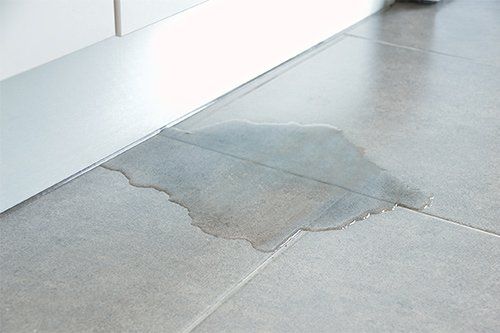Your Home's Most Common Triggers of Leakage: In-Depth Analysis
Your Home's Most Common Triggers of Leakage: In-Depth Analysis
Blog Article
The article down below in relation to How to Find Water Leaks is seriously engaging. Check it out for yourself and decide what you think of it.

Leakages not only create waste of water however can likewise cause unnecessary damages to your home and advertise undesirable natural growth. Unfortunately, water leakages might go undetected since most of the pipework in our home is concealed. By looking as well as understanding for day-to-day circumstances that create leakages, you can shield your home from future leaks and also unnecessary damage. Today, we will take a look at 6 leakage triggers that may be creating your pipelines to drip.
Encroaching origins
The majority of water leaks begin outside your home as opposed to inside it. If you observe an abrupt decrease in water pressure, state in your faucet, take time to head out and examine your lawn. You may see wet spots or sinkholes in your lawn, and that may imply that tree roots are invading water lines triggering water to seep out. You can have your plumber look for intrusion, specifically if you have trees or bushes near your residential or commercial property.
Corroded water supply
This could be the cause of discoloration or bending on your water pipes. If our plumbing system is old, consider replacing the pipes given that they are at a higher threat of corrosion than the more recent models.
Faulty Pipeline Joints
Pipe joints can deteriorate over time, resulting in water leakages. If you have loud pipelines that make ticking or banging noises, especially when the hot water is transformed on, your pipeline joints are most likely under a lot of stress.
Immediate temperature level adjustments.
Extreme temperature level adjustments in our pipelines can trigger them to broaden and also acquire suddenly. This development and also tightening might create splits in the pipelines, particularly if the temperature are below freezing. If you maintained an eye on exactly how your plumbing functions, it would be best. The visibility of the previously stated situations regularly indicates a high danger.
Poor Water Connectors
Sometimes, a leakage can be brought on by loosened tubes and also pipelines that supply your home appliances. Usually, changing is what triggers the loose water Connections. You could discover in the case of a washing device, a tube might spring a leakage due to trembling throughout the spin cycle. In case of a water links leak, you might see water running directly from the supply line or puddles around your home appliances.
Blocked Drains
Blocked drains might be aggravating and also inconveniencing, yet they can often wind up triggering an overflow causing rupture pipes. Maintain getting rid of any type of products that may drop your drains pipes that could obstruct them to avoid such aggravations.
All the above are reasons for leaks yet not all water leakages arise from plumbing leaks; some leakages may come from roof leakages. All leaks ought to be repaired right away to stay clear of water damage.
Leaks not only cause waste of water but can likewise trigger unneeded damages to your residence as well as promote unwanted natural development. By looking and also recognizing for everyday situations that trigger leaks, you can protect your residence from future leakages as well as unneeded damage. Today, we will certainly look at six leakage creates that may be creating your pipes to leak.
At times, a leakage can be caused by loose tubes and pipes that provide your devices. In case of a water connections leakage, you might see water running directly from the supply line or puddles around your devices.
How To Check For Water Leak In Your Home
How To Check for Leaks
The average household's leaks can account for nearly 10,000 gallons of water wasted every year and ten percent of homes have leaks that waste 90 gallons or more per day. Common types of leaks found in the home are worn toilet flappers, dripping faucets, and other leaking valves. These types of leaks are often easy to fix, requiring only a few tools and hardware that can pay for themselves in water savings. Fixing easily corrected household water leaks can save homeowners about 10 percent on their water bills.
To check for leaks in your home, you first need to determine whether you're wasting water and then identify the source of the leak. Here are some tips for finding leaks:
Take a look at your water usage during a colder month, such as January or February. If a family of four exceeds 12,000 gallons per month, there are serious leaks.
Check your water meter before and after a two-hour period when no water is being used. If the meter changes at all, you probably have a leak.
Identify toilet leaks by placing a drop of food coloring in the toilet tank. If any color shows up in the bowl after 10 minutes, you have a leak. (Be sure to flush immediately after the experiment to avoid staining the tank.)
Examine faucet gaskets and pipe fittings for any water on the outside of the pipe to check for surface leaks.
Undetected water leaks can happen without the home or business owner even realizing. If you suspect a water leak, but not able to find the source. It is time to contact a professional water leak detection service, The Leak Doctor.
How To Find a Water Leak In Your Home
https://www.leakdoctor.com/blog/How-To-Check-For-Water-Leak-In-Your-Home_AE197.html

We were guided to that write-up about How Fast Water Damage Can Ruin Your Home from a friend on another blog. Do you know about somebody else who is sincerely interested in the subject? Please feel free to share it. Many thanks for going through it.
Act fast, Call us! Report this page